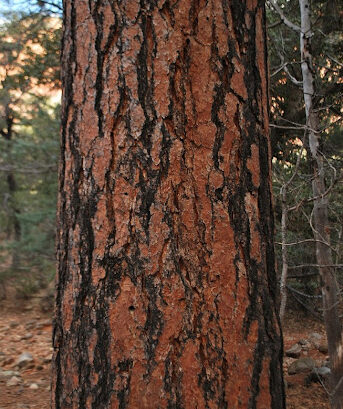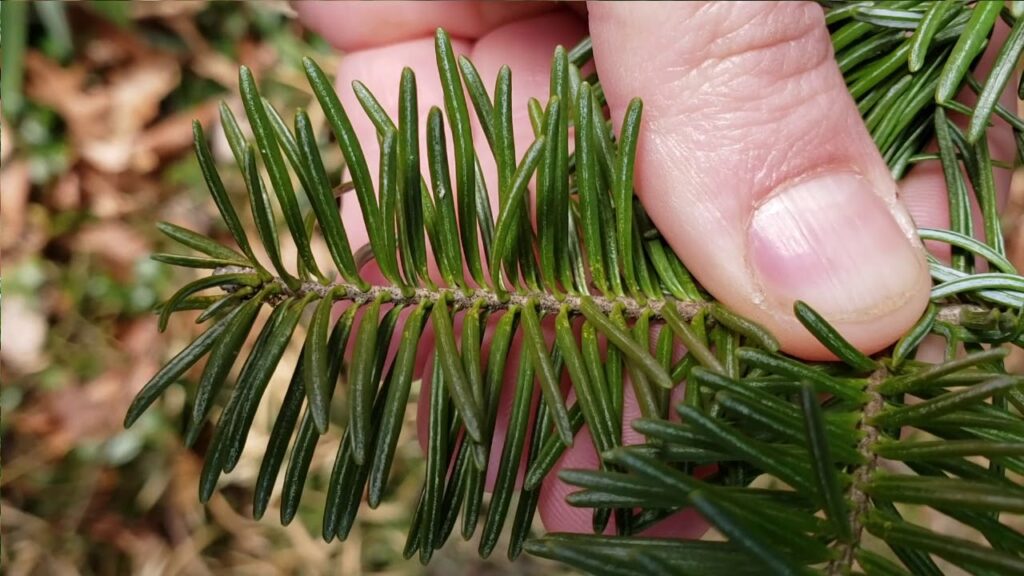The two most common types of trees within the Dishman Hills are the Ponderosa pine (Pinus ponderosa) and the Douglas fir (Pseudotsuga menziesii).
Both are large evergreen conifers that are prevalent across the western United States.

The Dishman Hills are dominated by Ponderosa pine trees. These pines are drought tolerant and can thrive in areas with very little water and soil, unlike the Douglas fir. Growing 100-165 feet tall, this tree species grows in large, open forests and prefers lots of space and sunlight.
The bark of the Ponderosa is very recognizable, though it can appear similar to the Douglas fir at certain stages of life. The bark of the Ponderosa grows in sheets and is very thick with deep grooves. This protects the tree against fire and helps the tree maintain moisture. As the tree matures, the sheets will grow closer together and change color. Very old trees will have a distinctive red-yellow color which helps determine its age without having to count the rings inside.
Fun Fact: After being in the hot sun, the bark sometimes gives off a distinct vanilla scent. See for yourself and try putting your nose into one of the grooves on a warm day.
As ponderosa pines mature, they self-prune, meaning the tree will “starve” lower unproductive branches that do not receive enough sunlight or nutrients. These branches will eventually fall off, leaving a longer stretch of branch-less trunk. The lack of lower branches acts as a second form of fire protection, as a ground fire cannot catch lower branches on fire or penetrate the thick bark.


The Douglas fir can be identified by its downward growing cones with three points that stick out from the cone scales (called bracts). This type of tree grows to be 65-325 feet tall, though the northwest coast tends to have the tallest of the trees.
The Douglas fir is an evergreen tree, meaning it keeps its foliage (needles) all year round, even in the winter. The needles are generally short and soft, unlike the long needles of the Ponderosa. Look closely at the needles to find rows of tiny holes (stomas) where gases such as carbon dioxide and oxygen enter and leave the tree – as if the tree were inhaling and exhaling. Observe how these short needles are arranged in a spiral.
A mature Douglas fir has thick, dark reddish-brown, deeply grooved bark which helps protect the tree from fire & insects.
While the Ponderosa pine prefers dry, arid soil and lots of sunlight, Douglas firs grow best in full or part shade and thrive in wet areas. Because of this, you can often find small Douglas fir saplings between large, mature Ponderosas that provide them shade. Over time, the Douglas fir can even crowd out the Ponderosa, gradually changing the entire ecosystem.
The Douglas fir send its roots deep into the ground in search for water, anchoring the tree into the soil which serves the tree well during wind storms. Look for this tree in the ravine and use it as an indicator of where water is available.



Use your skills: Now that you’ve learned about both the Ponderosa pine and the Douglas fir, can you identify the type of tree in the very first picture on this page?